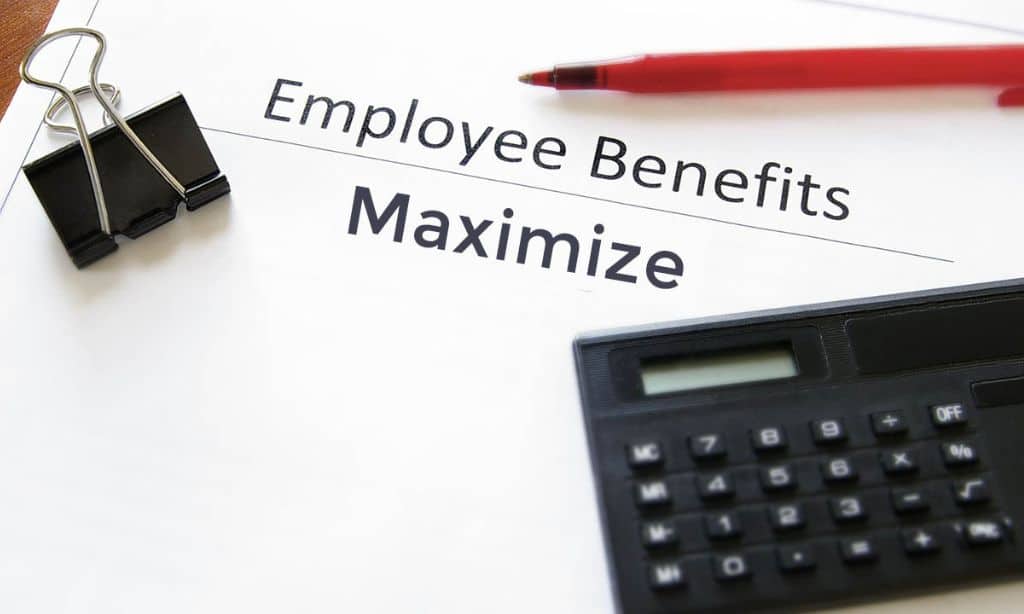Tax planning is an essential skill for millennials navigating the complexities of modern financial life in the USA. With unique challenges like student loans, the rise of the gig economy, and significant milestones such as first-time home buying, millennials face a distinct set of tax-related hurdles.
Proactive tax planning not only helps save money but also builds a strong financial foundation for the future.
In this article, we’ll explore 12 actionable strategies to help millennials optimize their taxes and secure long-term financial stability. These Tax Planning Strategies for Millennials in the USA are designed to simplify the tax process, maximize savings, and ensure a stronger financial future.
1. Understanding Your Tax Bracket
Grasping how tax brackets work is fundamental to effective tax planning. The U.S. employs a progressive tax system, meaning different portions of your income are taxed at varying rates.
Here’s a breakdown of the federal income tax brackets for 2024:
| Taxable Income Range (Single Filers) | Tax Rate |
| Up to $11,000 | 10% |
| $11,001 – $44,725 | 12% |
| $44,726 – $95,375 | 22% |
| $95,376 – $182,100 | 24% |
| $182,101 – $231,250 | 32% |
| $231,251 – $578,125 | 35% |
| Over $578,125 | 37% |
Tips for Understanding Your Tax Bracket
- Identify which tax bracket your income falls into to plan effectively.
- Use IRS tax calculators or tools for precise calculations.
- Explore deductions and credits to potentially reduce your taxable income.
2. Maximize Employer Benefits
Taking full advantage of employer-sponsored benefits can lead to significant tax savings.
Contributions to a 401(k) plan, for example, reduce your taxable income while helping you save for retirement.
Similarly, Health Savings Accounts (HSAs) offer triple tax benefits: contributions are pre-tax, growth is tax-free, and withdrawals for qualified medical expenses are also tax-free.
Tax Advantages of Employer Benefits
| Benefit | Tax Advantage |
| 401(k) Contributions | Reduces taxable income |
| HSA Contributions | Triple tax benefits |
| Flexible Spending Account (FSA) | Tax-free medical expense savings |
Tips for Maximizing Employer Benefits
- Always contribute enough to a 401(k) to receive the full employer match.
- Utilize an HSA if you have a high-deductible health plan.
- Check if your employer offers commuter benefits or tuition reimbursement programs.
3. Take Advantage of Tax Credits
Tax credits directly reduce the amount of tax you owe, making them more valuable than deductions because they provide a dollar-for-dollar reduction in your tax liability.
Unlike deductions, which lower taxable income, credits directly impact the taxes you owe, offering substantial savings.
Some key credits for millennials include:
| Tax Credit | Maximum Value | Eligibility Criteria |
| Earned Income Tax Credit (EITC) | Up to $7,430 | Based on income and family size |
| Child Tax Credit (CTC) | $2,000 per child | Dependent child under age 18 |
| Lifetime Learning Credit | $2,000 | Tuition and education expenses |
| Saver’s Credit | $1,000 ($2,000 for couples) | Contributions to retirement accounts |
Tips for Utilizing Tax Credits
- File your taxes early to claim credits like the EITC without delays.
- Keep records of education expenses to claim the Lifetime Learning Credit.
- Use IRS Form 8862 if you’re reapplying for disallowed credits.
4. Deduct Student Loan Interest
Millennials with student loans can deduct up to $2,500 in interest paid during the year.
This deduction applies even if you don’t itemize your taxes, making it accessible to a broader group of taxpayers.
The deduction reduces your taxable income directly, leading to significant savings, especially for individuals in higher tax brackets. Eligibility criteria include:
- Modified Adjusted Gross Income (MAGI) below $85,000 (single) or $170,000 (joint filers).
- You must not be claimed as a dependent on someone else’s tax return.
Impact of Student Loan Interest Deduction
| Income Level | Interest Paid | Tax Savings (Approx.) |
| $50,000 | $2,500 | $550 |
| $70,000 | $1,500 | $330 |
Tips for Deducting Student Loan Interest
- Track your interest payments throughout the year.
- Obtain Form 1098-E from your loan servicer for accurate reporting.
- Consider refinancing loans to reduce interest rates while keeping eligibility for deductions.
5. Save for Retirement with IRAs
Individual Retirement Accounts (IRAs) are powerful tools for building wealth and saving on taxes.
They allow individuals to grow their retirement savings through tax-advantaged accounts, ensuring more financial security in the future.
Both Roth IRAs and Traditional IRAs cater to different financial goals and tax preferences, making them highly versatile.
For millennials, starting early with IRAs can lead to substantial long-term benefits due to compound interest, while also providing immediate tax relief depending on the account type. Choose between:
| Feature | Roth IRA | Traditional IRA |
| Tax Benefits | Tax-free withdrawals | Reduces taxable income |
| Contribution Limit (2025) | $6,500 ($7,500 for 50+) | $6,500 ($7,500 for 50+) |
| Best For | Long-term growth | Immediate tax savings |
Tips for Saving with IRAs
- Open a Roth IRA early to maximize compound growth.
- Contribute consistently to take advantage of dollar-cost averaging.
- Explore spousal IRAs if one partner is not earning income.
6. Invest in Tax-Efficient Accounts
Tax-efficient investing minimizes the tax impact on your returns.
Two effective strategies:
- 529 Plans: These accounts offer tax-free growth and withdrawals for qualified education expenses.
- Tax-Advantaged Brokerage Accounts: Use index funds and ETFs to reduce capital gains taxes.
Comparison of Tax-Efficient Accounts
| Account Type | Tax Benefits | Best Use Cases |
| 529 Plan | Tax-free growth for education | Saving for college |
| Brokerage | Lower capital gains taxes | Long-term investments |
Tips for Tax-Efficient Investing
- Choose index funds to minimize taxable distributions.
- Avoid frequent trading to reduce short-term capital gains.
- Utilize tax-loss harvesting for underperforming investments.
7. Leverage the Gig Economy’s Tax Deductions
Millennials participating in the gig economy can significantly reduce taxable income by claiming these deductions.
As a self-employed individual, you are entitled to a variety of tax breaks designed to offset the cost of running your business. This includes deductions for home offices, work-related travel, and even software subscriptions.
Understanding these deductions not only saves money but also ensures compliance with tax regulations.
Here’s a detailed breakdown of key deduction categories:
| Deduction Category | Examples |
| Home Office | Rent, utilities for workspace |
| Equipment & Supplies | Laptops, software, office supplies |
| Vehicle Expenses | Mileage, fuel, and maintenance |
Tips for Gig Economy Workers
- Keep meticulous records of all expenses related to your work.
- Use apps like QuickBooks Self-Employed to track expenses automatically.
- Pay quarterly estimated taxes to avoid underpayment penalties.
8. File Taxes Early to Avoid Penalties
Filing early ensures faster refunds and reduces the risk of identity theft.
Tools like TurboTax and H&R Block streamline the process by providing step-by-step guidance.
| Benefit of Filing Early | Why It Matters |
| Faster Refunds | Receive your money sooner |
| Avoid Penalties | Reduce late-filing penalties |
| Prevent Identity Theft | File before fraudsters can use your data |
Tips for Early Tax Filing
- Gather all necessary documents (W-2s, 1099s) by January.
- Double-check deductions and credits to avoid errors.
- Use e-filing for faster processing.
9. Use Tax Software or Hire a Professional
Choosing between tax software and professional help depends on your financial situation and comfort level.
Both options have unique advantages, and the right choice ensures accurate filing and maximizes your deductions or credits.
Evaluate your situation to choose the best tax preparation option:
| Option | Pros | Cons |
| Tax Software | Affordable, user-friendly | Limited personalization |
| Tax Professional | Expert advice, tailored approach | Higher cost |
Tips for Choosing Tax Help
- Opt for tax software if you have simple returns.
- Hire a CPA if you have multiple income sources or investments.
- Check online reviews for reputable professionals.
10. Understand State Taxes
State income taxes vary significantly across the USA, with some states offering no income tax and others imposing high rates. Planning ahead based on your state’s tax structure can have a substantial impact on your financial strategy.
This is particularly important for millennials who might be considering job relocations or remote work opportunities.
A clear understanding of these taxes will help in creating an efficient overall tax plan.
| State | Income Tax Rate | Notable Feature |
| Texas | None | No state income tax |
| California | Up to 13.3% | Highest state tax rate |
| Florida | None | No state income tax |
Tips for Managing State Taxes
- Research your state’s tax policies before relocating.
- Account for state taxes in your overall financial planning.
- Consider working remotely from a no-tax state if feasible.
11. Utilize Tax Loss Harvesting
Tax loss harvesting allows you to offset capital gains by selling underperforming investments at a loss. This strategy reduces your taxable income and minimizes the tax impact of your gains.
For example, if you have a $2,000 capital gain but a $1,000 loss, you only pay taxes on the net $1,000.
It’s a useful tool for millennials with taxable investment accounts, helping them optimize their returns while staying tax-efficient.
Offset capital gains by selling underperforming investments:
| Scenario | Gain/Loss | Tax Impact |
| Stock A | $2,000 gain | Taxed at capital gains rate |
| Stock B | $1,000 loss | Offsets part of Stock A gain |
Tips for Tax Loss Harvesting
- Consult a financial advisor to align harvesting with investment goals.
- Be aware of the IRS wash-sale rule to avoid penalties.
- Reinvest proceeds into similar but not identical assets.
12. Keep Up with Tax Law Changes
It’s crucial to stay updated on tax law changes every year, as they can impact your deductions, credits, and overall tax strategy.
Regularly reviewing updates ensures you’re maximizing your benefits and staying compliant with the latest regulations. Ignoring changes could result in missed opportunities or costly mistakes.
Reliable sources include IRS publications, financial blogs, and professional advisors.
| Resource | Description |
| IRS.gov | Official updates and tax forms |
| TurboTax Blog | Practical tax-saving tips |
| Investopedia | In-depth financial advice |
Tips for Staying Updated on Tax Laws
- Subscribe to IRS newsletters for timely updates.
- Follow reputable tax blogs and financial news platforms.
- Consider consulting a tax professional annually.
Takeaway
Effective tax planning is essential for millennials looking to build financial stability and ensure long-term growth.
By implementing these strategies, you can reduce your tax burden, increase savings, and secure a more stable financial future. Staying informed about tax laws, taking advantage of available deductions, and planning ahead can make a significant difference in your financial outcomes.
Don’t hesitate to consult a tax professional who can offer personalized advice and help you navigate the complexities of tax planning, ensuring that you make the most of every opportunity available to you.







































